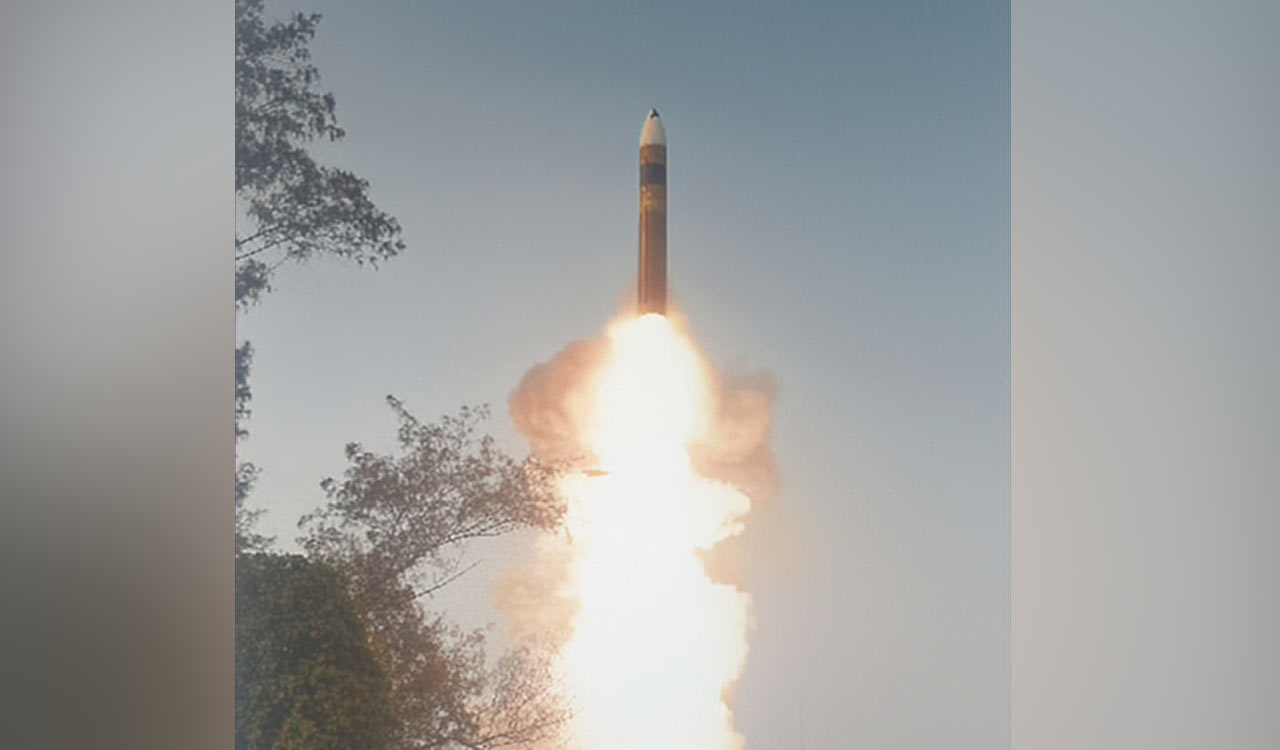
The indigenisation of the military inventory is an arduous endeavour for a developing nation
Published Date – 18 March 2024, 11:59 PM

India’s successful test firing of the Agni 5 missile, with Multiple Independently Targetable Reentry Vehicle (MIRV), is a major boost to the country’s deterrence capability. It demonstrated that India has aced technology for miniaturised nuclear warheads. “Mission Divyastra”, the culmination of years of dedicated efforts by the Defence Research and Development Organisation (DRDO), showcases India’s growing technological prowess in the global arena. With the demonstration of MIRV capability, India has joined a select band of nations — the United States, Russia, France, UK and China — that can launch intercontinental ballistic missiles (ICBMs) of 5,000 km-plus range. The MIRV capability implies that a single warhead can carry multiple nuclear warheads and each of them can strike separate targets at different locations. This technology gives India additional options, especially in the face of China’s rapidly expanding nuclear arsenal. But it also raises some concerns. Wedged between nuclear-armed China and Pakistan, the country has demonstrated its ability to develop cutting-edge defence systems that are on a par with those of major global powers. This technology enables the forces to deploy multiple warheads on missiles, introducing a new level of flexibility and resilience in India’s nuclear arsenal. Such advancements are crucial in a world where security threats are evolving rapidly and maintaining a credible deterrence posture is essential. India’s MIRV push can serve as a powerful deterrent against potential adversaries, reaffirming its resolve to defend its sovereignty and national interests.
Though India has made significant progress in the domain of missiles and nuclear weapons, indigenisation of the conventional military inventory continues to be at a very slow pace. The entire ecosystem appears to be biased towards encouraging arms imports. The indigenisation of the military inventory is an arduous endeavour for a developing nation and there are bound to be numerous hurdles. The remedy lies not in obfuscation but in an objective review of failures and finding the optimal way ahead, with a much higher degree of institutional integrity and professional competence. The best way forward is to encourage more private sector companies to participate in defence production, especially in the medium and high-tech regimes, to boost indigenisation in the sector. Premier institutes such as IITs and even private universities need to be incentivised to get into the defence sector to run academic courses. The government needs to provide tax incentives to defence manufacturers. There is a growing realisation now about the urgency for policy interventions to boost indigenisation. There is a need to encourage startups, especially relating to cutting-edge technology products such as drones used in warfare. Amid current geopolitical tensions, the country’s enhanced deterrence capabilities can act as a counterbalance to emerging threats, thereby contributing to peace and security regionally. India must continue to leverage its technological expertise to safeguard its interests while upholding the principles of peace, stability and responsible nuclear stewardship on the world stage.
Source | Powered by Yes Mom Hosting






